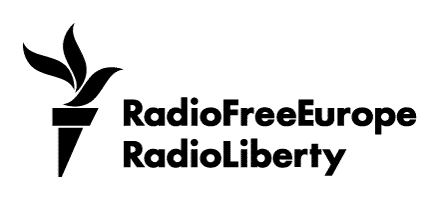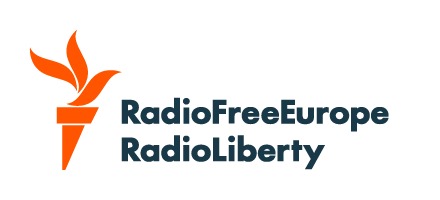US Defense Secretary Pete Hegseth issued a stark warning to Moscow if it does not end its war against Ukraine as NATO defense ministers met to discuss spending targets, continued aid for Kyiv, and air defense systems.
In Brussels on October 15 for the first official defense ministers' meeting since the military alliance's June summit in The Hague, Hegseth said Washington and its allies would "impose costs on Russia for its continued aggression" if the war doesn't end soon.
"If we must take this step, the US War Department stands ready to do our part in ways that only the United States can do," Hegseth said.
He did not elaborate but the comments come amid renewed talk that US President Donald Trump may discuss a request by Kyiv to provide long-range Tomahawk missiles at a meeting with Ukrainian President Volodymyr Zelenskyy on October 17 in Washington.
"Now is the time to end this tragic war, stop the needless bloodshed, and come to the peace table," Hegseth said.
"This is not a war that started on President Trump's watch, but it will end on his watch."
During the Brussels meeting of defense ministers, officials discussed how to achieve a pledge to spend 5 percent of gross domestic product (GDP) on defense by 2035. An estimated 3.5 percent of that 5 percent must go on what is known as “hard” military outlays, mostly spending on weapons, vehicles, and ammunition.
Especially relevant to the effort to assist Ukraine in its war against Russia is the US-led Prioritized Ukraine Requirements List (PURL), an initiative that was launched in August.
So far, approximately $2 billion worth of American arms designated for Ukraine, including Patriot and HIMARS missile systems, have been financially supported by Canada, Denmark, Germany, the Netherlands, Norway, and Sweden.
Another package worth $500 million is in the works, bankrolled by Belgium, Estonia, Iceland, Latvia, Lithuania, and Luxembourg. And it's possible that new packages will be announced in the coming days.
Hegseth urged his counterparts to increase PURL spending, which Zelenskyy had hoped would reach $3.5 billion by October.
"Our expectation today is that more countries donate even more, that they purchase even more to provide for Ukraine, to bring that conflict to a peaceful conclusion," Hegseth said.
Frustrations About Increased European Defense Spending
But while the Europeans understand that increasing their defense spending is good for their relations with the US, there are also frustrations.
One European diplomat, speaking anonymously because they weren't authorized to speak about the issue publicly, told RFE/RL before the meeting that the current scheme is not optimal as "we essentially need to pay twice: first for the US defense industry and then for ourselves."
However, another European diplomat, also not authorized to speak publicly, said that this “is the only way forward for now and that we will see more countries signing up" to the defense spending initiative.
Sweden, Estonia, and Finland all made new pledge contributions at the meeting, but major European powers such as France and Britain did not.
NATO's most pressing issue is not military aid to Ukraine but Europe's integrated air and missile defense.
NATO Secretary-General Mark Rutte said the alliance was now "testing integrated systems that will help us detect, track and neutralize aerial threats" for use on its eastern flank, while EU defense ministers are to meet on October 16 to discuss a so-called "Drone Wall" on the eastern flank.
The issue has been forced front and center due to increased Russian drone incursions and violations of NATO airspace.
Essentially there are three Western air defense systems that can be used to counter the Russian threat: the American Patriot system, the German IRIS-T, and the Italian-French SAMP-T. Right now, the IRIS-T seems to be alliance's first choice -- even though all three can be used simultaneously.
While many European nations would like to acquire Patriots, the high demand means that there is waiting list, already stretching to several years.
In addition, the Patriot is focused more on long-range ballistic missile defense, whereas the IRIS-T is tailored for quick response at close to medium ranges and is particularly effective against drones. The IRIS-T is also cheaper and, at least for now, available faster for potential buyers.
How Best To Protect European Skies?
There are currently three different and overlapping concepts that are being worked on: NATO’s Eastern Sentry initiative, the "drone wall," and its complementary Eastern Flank Watch, which the European Commission President Ursula von der Leyen recently floated.
The Eastern Sentry, which was launched by the military alliance almost directly after Russian drones entered Polish airspace in September, will most likely become a permanent feature as NATO countries are in agreement that the military presence on its eastern border needs to be boosted. While several European countries have already contributed, mainly with jets, the question going forward is what more can be done.
This is where the Eastern Flank Watch initiative comes in. While still not fully fleshed out by the European Commission, the idea is to bolster the eastern land, air, and sea borders with four key elements: ground defenses such as fortifications and anti-mobility systems designed to hinder the movement of enemy forces; a "drone wall," which will detect, track, and intercept drones entering European airspace; maritime security in the Baltic and Black Seas; and a system to monitor space-based threats. With a potential common EU defense budget of over 130 billion euros ($151 billion) in the coming years, there is a lot that needs to be agreed on.
While European leaders are mostly in agreement that anti-drone systems of various sorts are needed, there are also concerns that drone technology and tactics are moving forward with such speed that a "drone wall" could be redundant and outdated when it launches in two or three years' time.
As shown by the four large drones that disturbed traffic over Copenhagen Airport on September 22, the threat can also come from inside the bloc, both land and sea. That has European leaders and officials questioning just how much a drone wall would really help.












